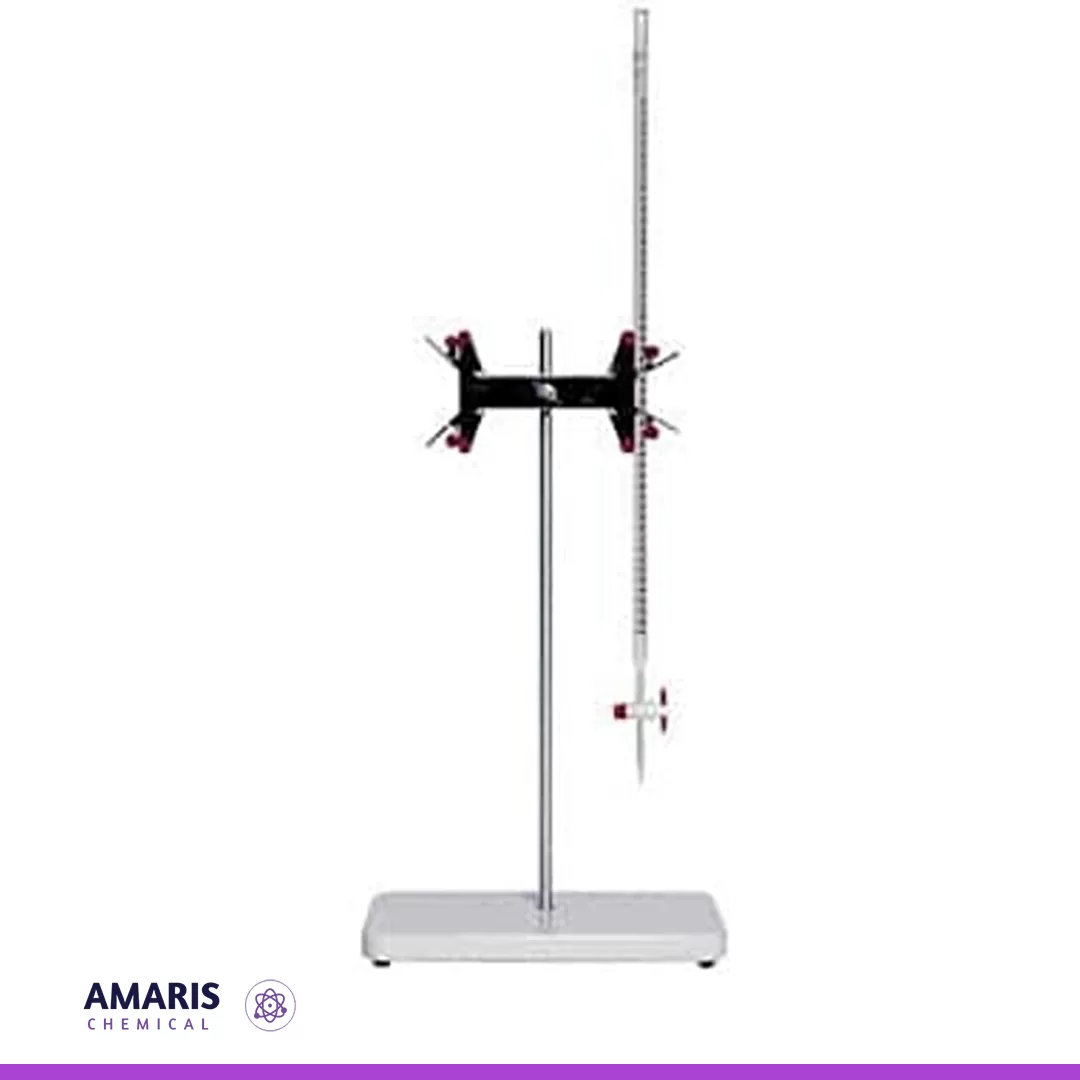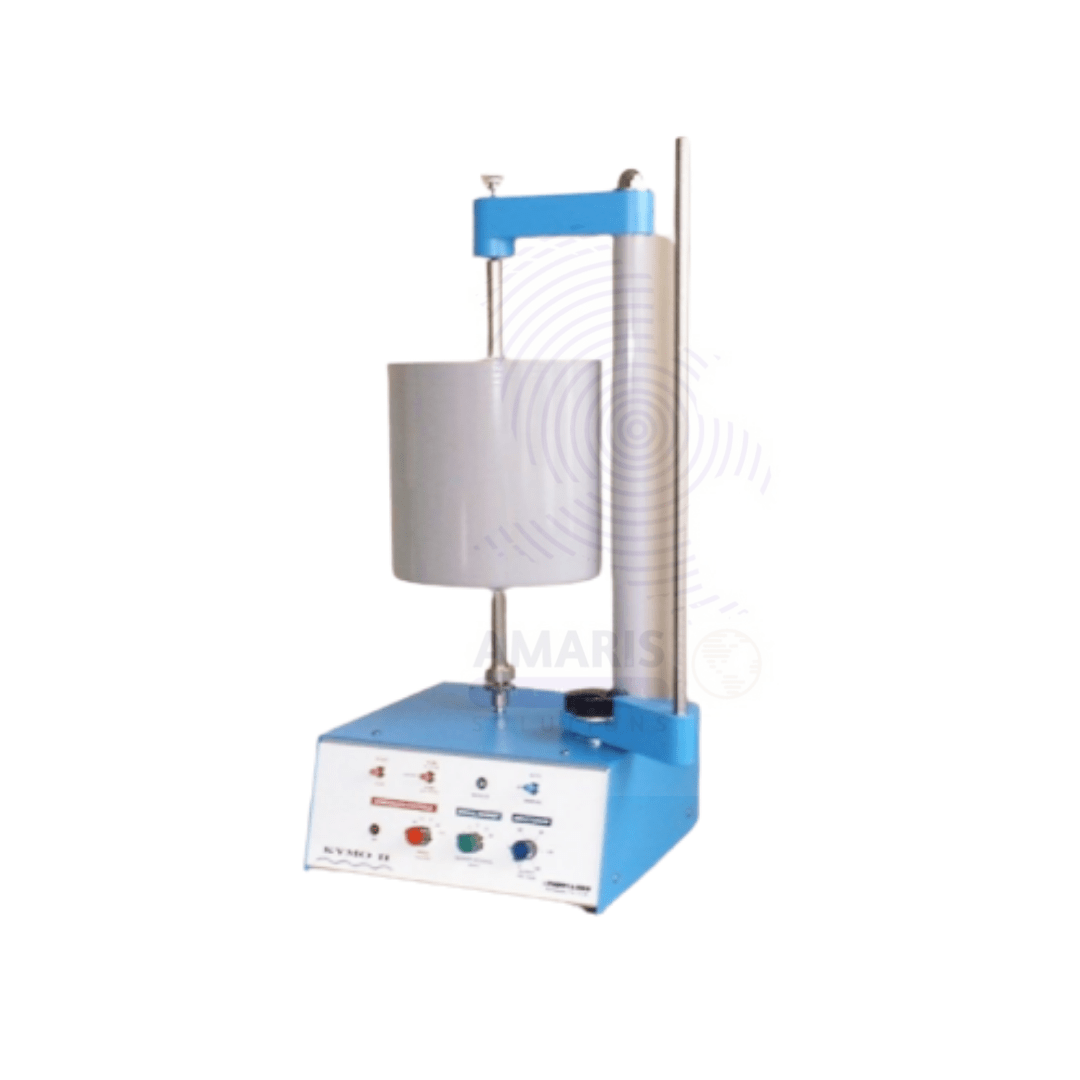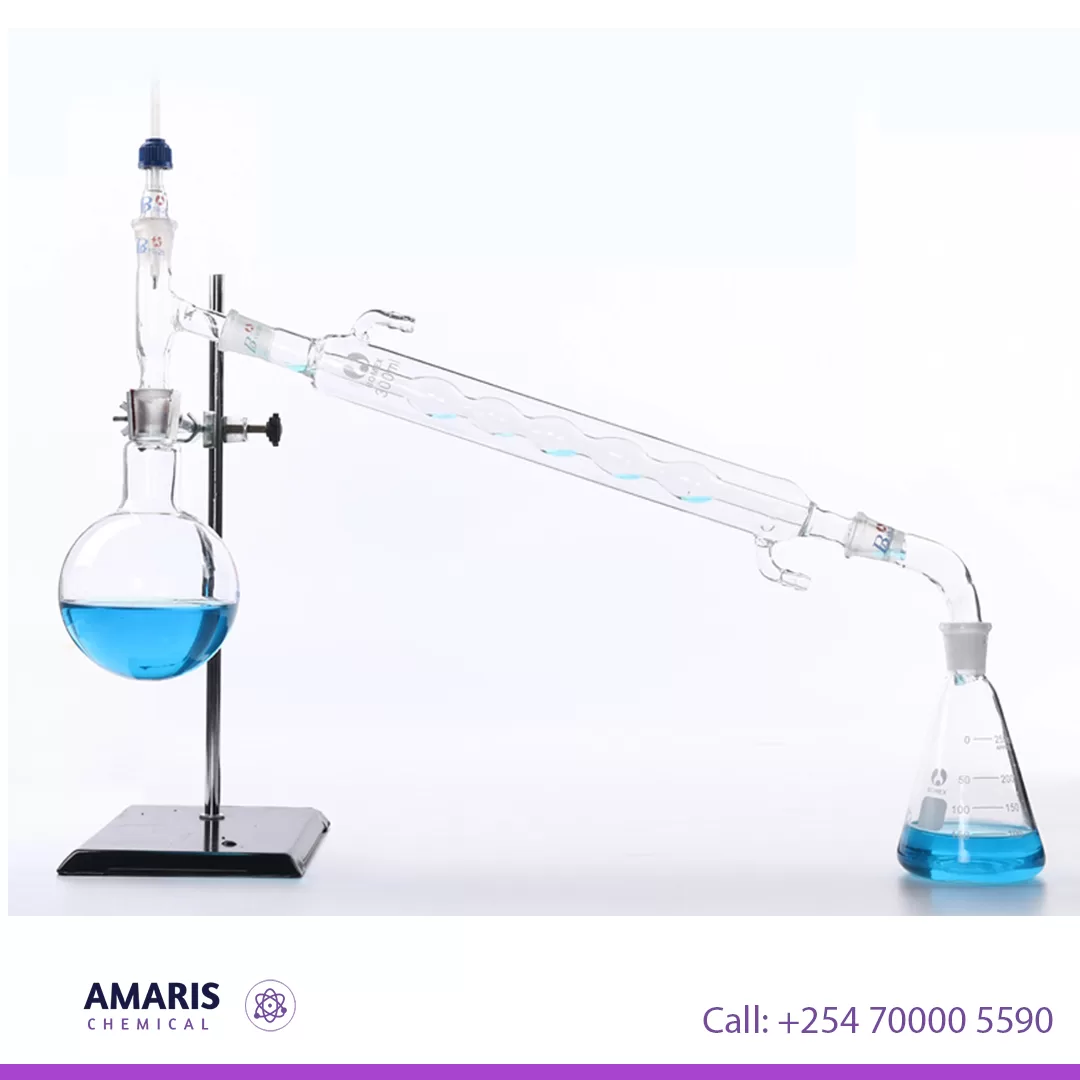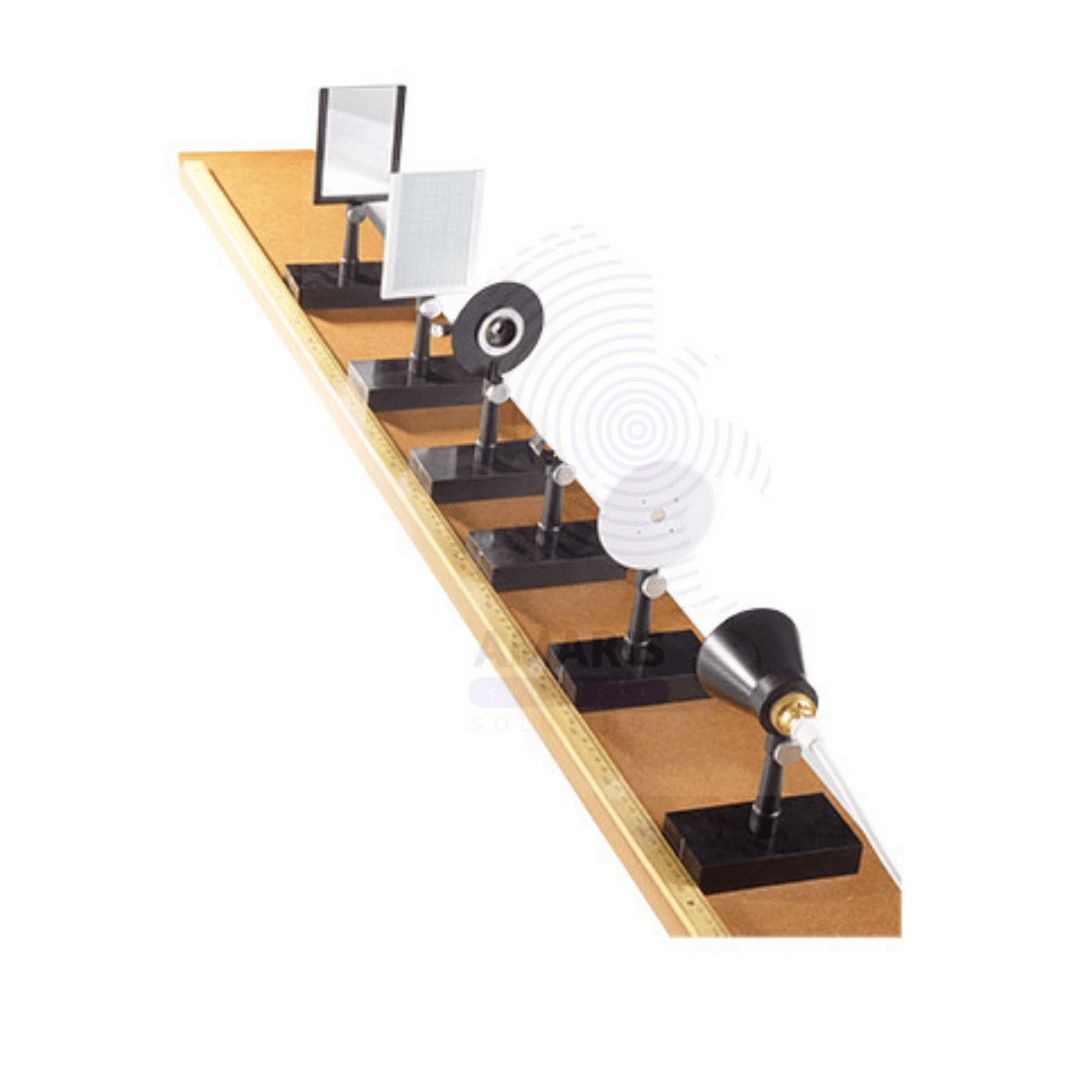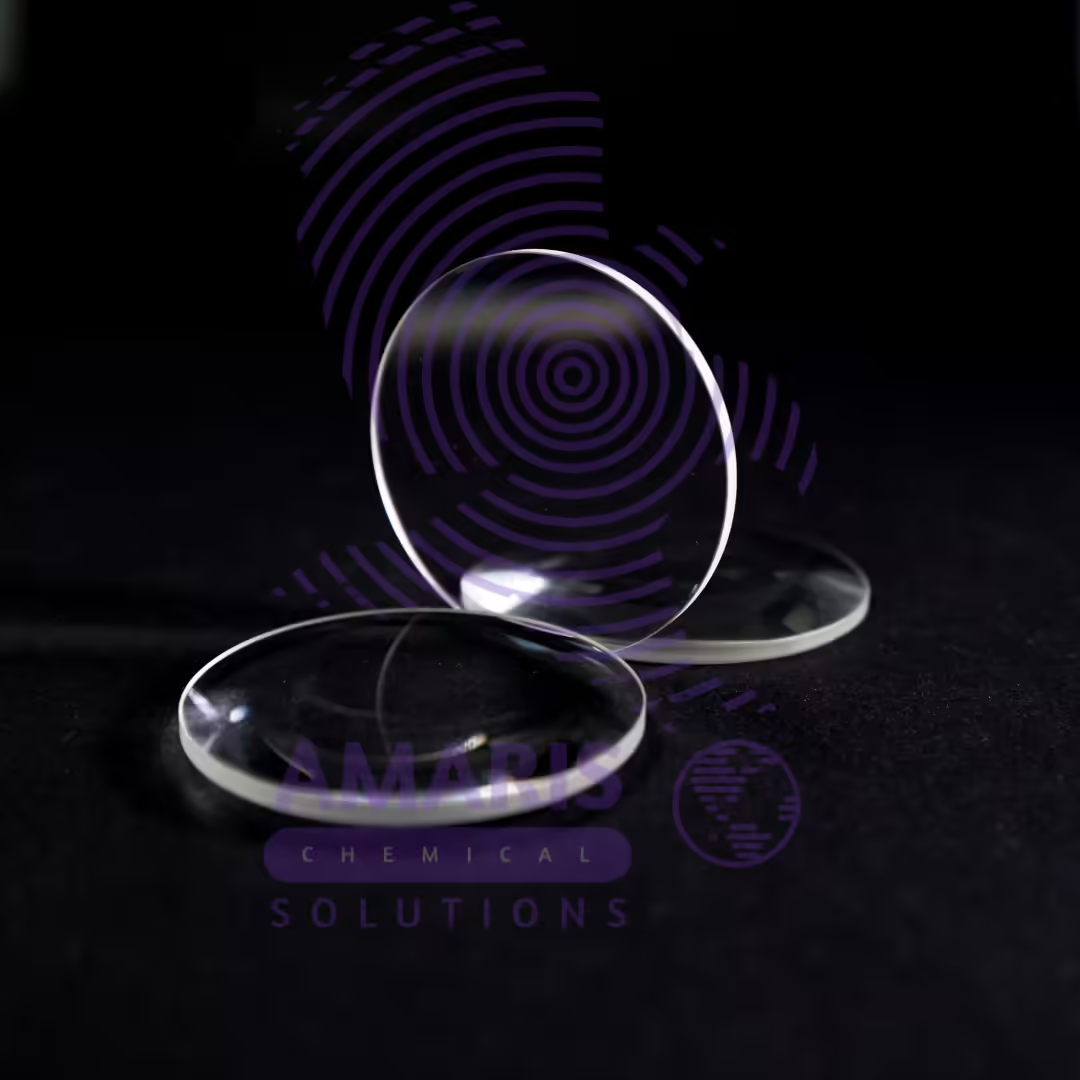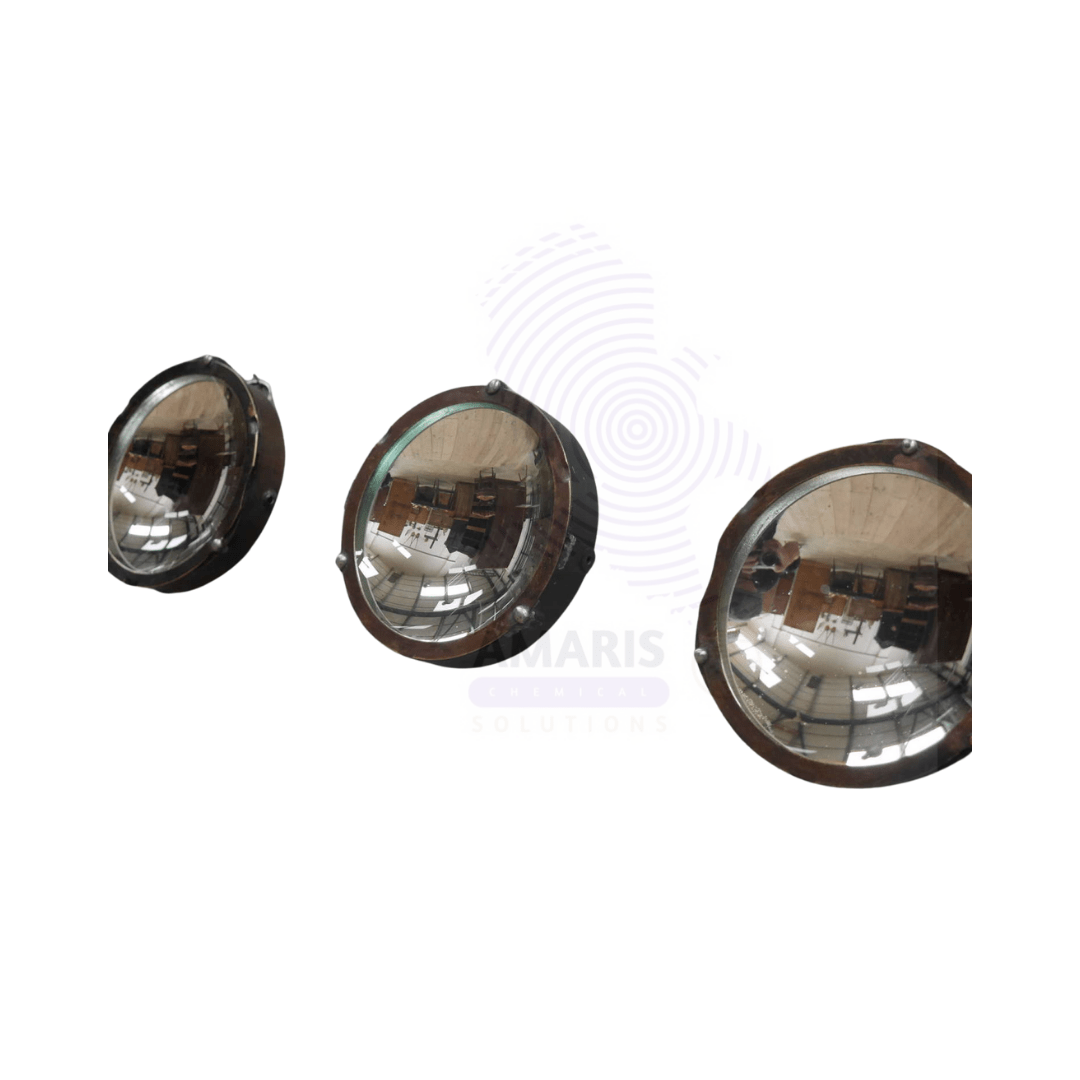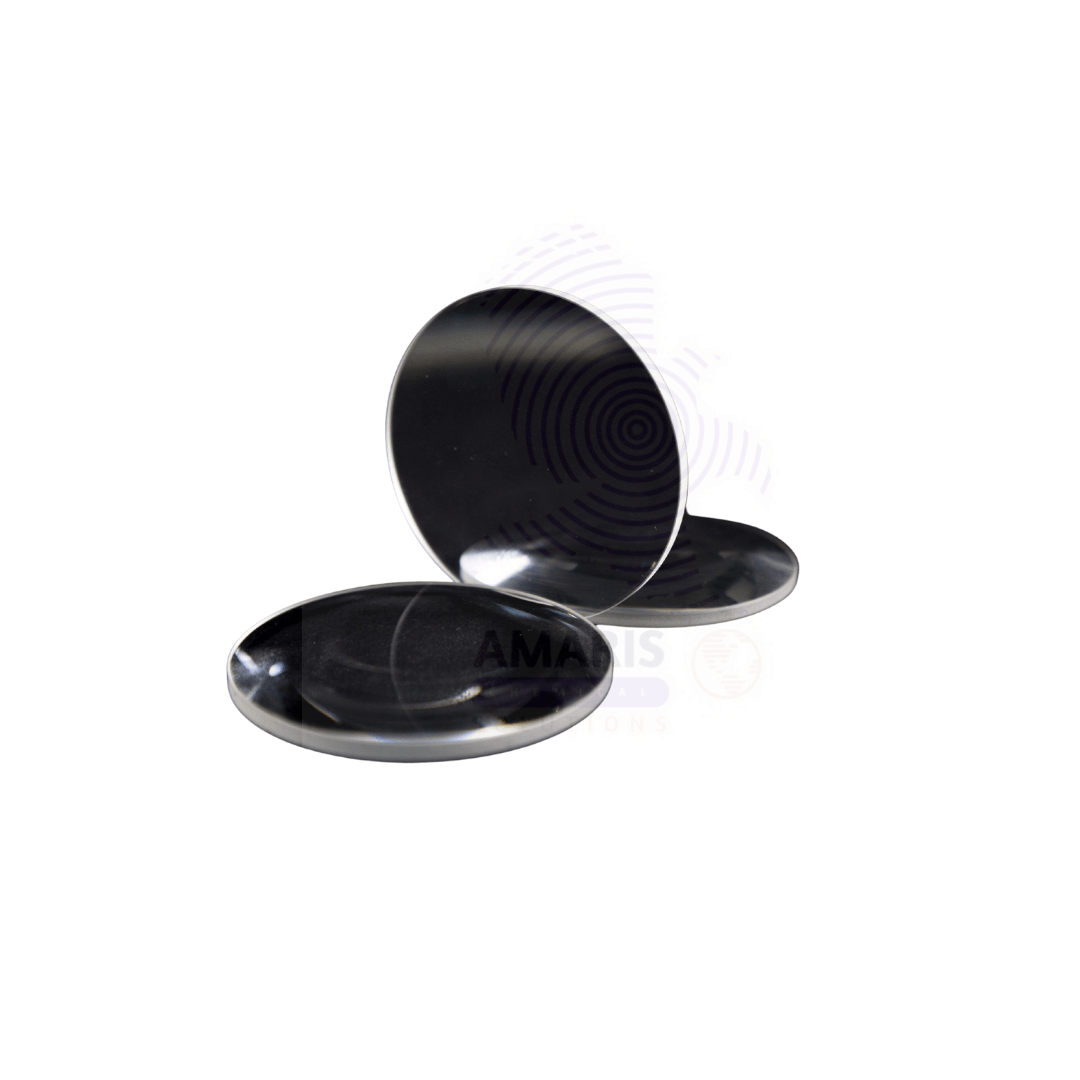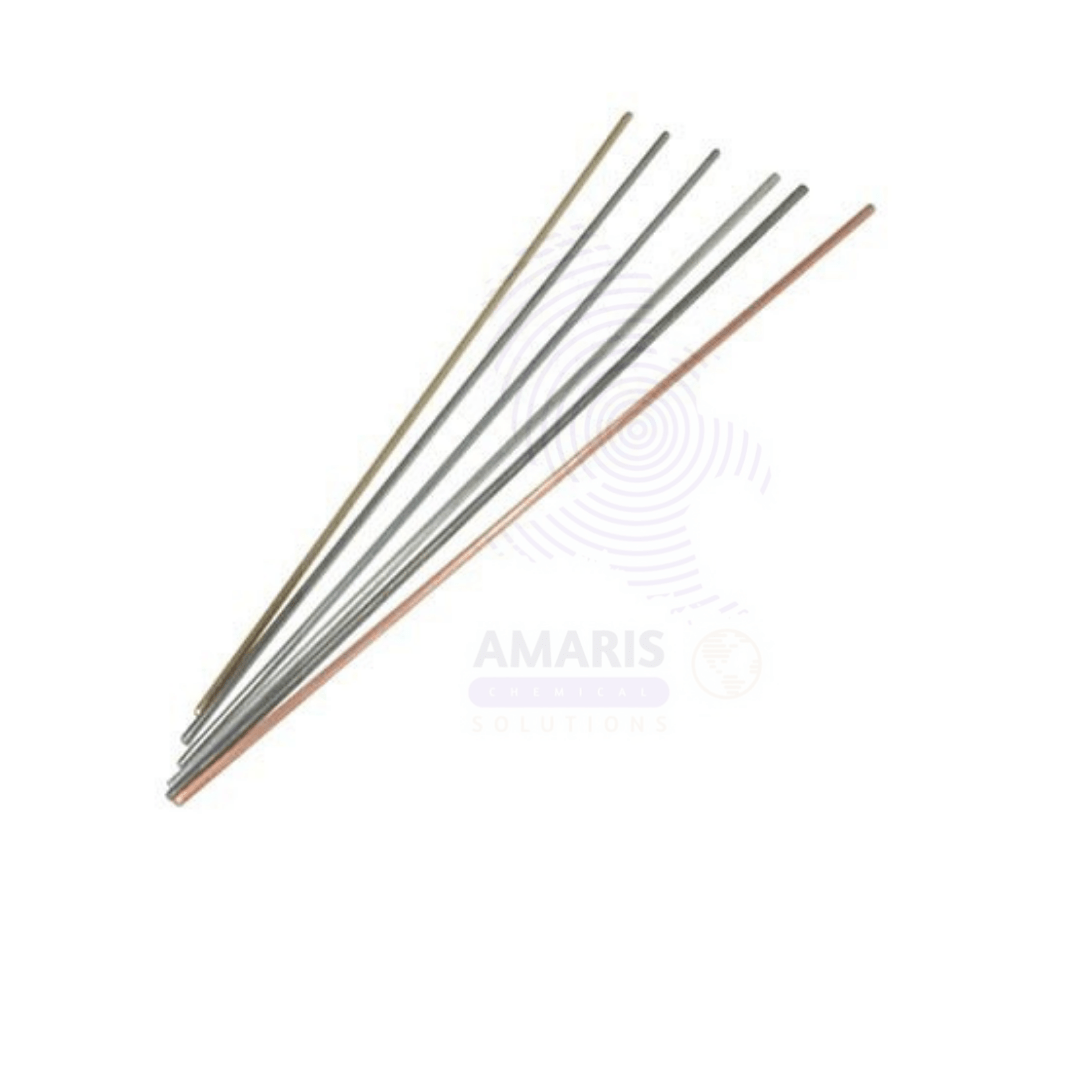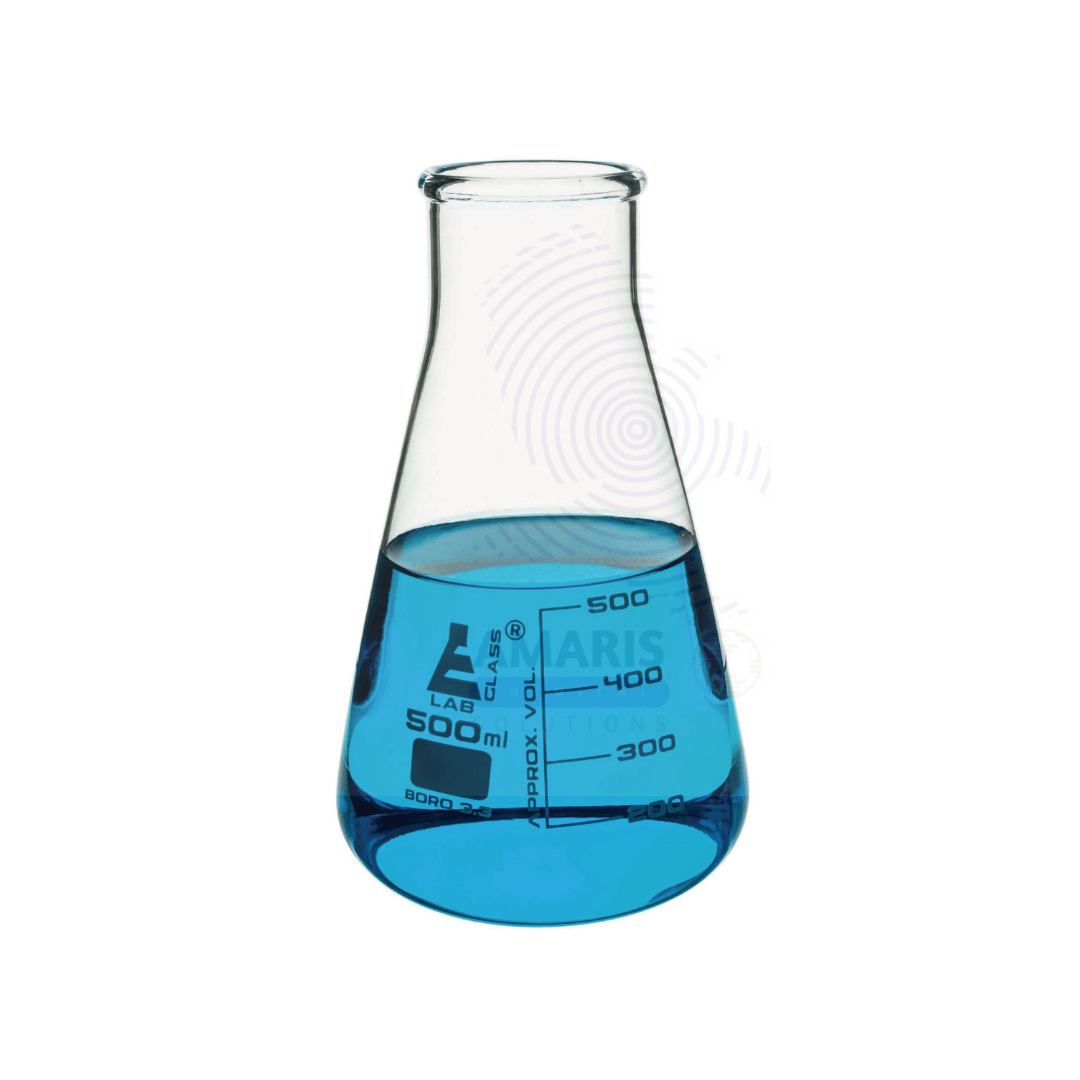complete kymograph equipment
A complete kymograph equipment typically includes:
- Kymograph Drum: The central component, usually made of metal or plastic, which rotates at a constant speed. It has a surface where paper or film can be attached for recording physiological data.
- Clockwork Mechanism: This regulates the rotation of the drum at a constant speed. Modern versions may use electric motors for rotation.
- Recording Mechanism: It could be a stylus or pen attached to a lever arm, which translates physiological changes into a graphical representation on the rotating drum. Alternatively, modern kymographs may use digital sensors for data acquisition.
- Mounting Stand: A stable platform to support the kymograph apparatus.
- Pulley System: This connects the drum to the clockwork mechanism, ensuring smooth and consistent rotation.
- Paper or Film: The recording surface where physiological events are transcribed. It may be attached to the drum using clips or adhesives.
- Ink or Pen: If using a stylus, ink or pen is required to make marks on the recording surface.
- Adjustment Controls: These allow fine-tuning of the drum's rotation speed and the sensitivity of the recording mechanism.
- Light Source: In some setups, a light source is positioned to enhance visibility of the recorded data, especially in dark environments.
- Supporting Software or Analysis Tools: For modern digital kymographs, software may be needed to analyze the recorded data.
- Optional Accessories: These may include additional sensors for measuring specific physiological parameters, such as temperature, pressure, or electrical signals.
- Instruction Manual: Essential for understanding the setup, operation, and maintenance of the kymograph equipment.
Complete optical bench
An optical bench is a versatile piece of laboratory equipment used to perform various experiments and demonstrations related to optics. It typically consists of several components that can be assembled and adjusted to accommodate different setups. Here's a list of components that would complete an optical bench setup:
- Base: The foundation of the optical bench, usually made of sturdy material like metal or plastic. It provides stability to the entire setup.
- Uprights: Vertical rods attached to the base, used to support other components and provide height adjustment.
- Riders: Sliding mounts that move along the length of the bench, allowing precise positioning of optical elements.
- Optical Elements:
- Lenses: Convex, concave, and cylindrical lenses for studying refraction, focal length, and image formation.
- Mirrors: Flat, concave, and convex mirrors for reflection experiments.
- Prisms: Triangular or other geometric shapes used for dispersion, total internal reflection, and other optical phenomena.
- Filters: Colored or polarizing filters for altering the properties of light.
- Apertures: Small openings to control the size and shape of the light beam.
- Diffraction Gratings: Used for studying diffraction patterns.
- Beam Splitters: Devices that divide a light beam into two or more beams.
- Light Source: A stable and adjustable light source such as a lamp or a laser. It should provide a collimated beam of light for accurate experiments.
- Power Supply: If the light source requires electrical power, a compatible power supply unit should be included.
- Screen or Detector: A surface onto which light is projected or detected, such as a white screen, a photodetector, or a camera.
- Measurement Tools: Instruments like rulers, vernier calipers, or micrometers for precise measurements of distances and angles.
- Accessories:
- Lens Holders: Attachable mounts for securing lenses in place.
- Optical Breadboards: Additional platforms for supporting components, especially useful for more complex setups.
- Alignment Tools: Such as lasers or precision jigs for aligning optical elements accurately.
- Optical Instruments:
- Spectrometer: For measuring spectral lines and analyzing light sources.
- Interferometer: Used for studying interference patterns and testing optical components.
- Safety Equipment: Safety goggles or glasses to protect the eyes from intense light sources.
- Instruction Manual: Detailed instructions on how to assemble, align, and perform experiments with the optical bench.
Concave and convex lens
Convex lenses are thicker at the center and thinner at the edges, causing parallel light rays to converge towards a focal point, which allows them to produce real or virtual images depending on the object's distance. They are widely used in applications such as microscopes, cameras, and projectors for magnification and image projection. In contrast, concave lenses are thinner at the center and thicker at the edges, causing parallel light rays to diverge, resulting in virtual images that are always upright. They are commonly employed in glasses for nearsightedness, laser beam expanders, and optical instruments to correct aberrations. Together, concave and convex lenses play crucial roles in various optical experiments and applications, enhancing light manipulation and analysis in laboratory settings.
Concave mirrors
Concave mirrors are essential optical components, characterized by their inward curvature, ability to focus light, and versatile applications in various fields, from scientific research to everyday items. Their unique properties make them invaluable in any setting that requires precise light manipulation and image formation.
Condenser liebig
A Liebig condenser, named after its inventor, Justus von Liebig, is a type of laboratory glassware used in chemistry for the purpose of cooling and condensing vapors. It consists of an inner straight tube through which the vapor passes and an outer water jacket that surrounds the inner tube. Cold water is circulated through the outer jacket to cool down the vapor and facilitate its condensation into a liquid state. Liebig condensers are commonly used in distillation setups and other chemical processes where the separation and collection of volatile substances are required.
Condenser liebig
The Liebig condenser is a straight-tube condenser designed for cooling and condensing vapors during distillation or reflux processes in a laboratory. It consists of a long inner tube through which the vapor travels, surrounded by an outer jacket through which cold water flows. The cold water absorbs heat from the vapor, causing it to condense into liquid form, which can then be collected.
This condenser is known for its simplicity, efficiency, and versatility, making it widely used for basic distillations, organic reactions, and the purification of volatile substances.
conductivity rods
Conductivity rods, also known as conductivity probes or conductivity sensors, are instruments used to measure the ability of a solution to conduct electrical current. They are commonly used in various fields such as chemistry, environmental science, and water quality monitoring.
These rods typically consist of two electrodes that are immersed in the solution being tested. An electrical current is passed between these electrodes, and the conductivity of the solution is determined by measuring the resistance to the flow of current.
The conductivity of a solution depends on factors such as the concentration of ions present in the solution and the temperature. Therefore, conductivity rods often come with built-in temperature compensation to provide accurate readings over a range of temperatures.
Conductivity rods are valuable tools for assessing the purity of water, determining the concentration of dissolved salts or other substances in a solution, and monitoring the overall quality of aqueous solutions in various industrial processes. They are relatively simple to use and provide quick and reliable measurements, making them indispensable in many laboratory and field settings.
Conical flask
Conical flask, also known as an Erlenmeyer flask, is a type of laboratory glassware commonly used in chemistry laboratories for holding, mixing, and heating liquids. It has a conical shape with a flat bottom, a cylindrical neck, and a narrow opening. The conical shape allows for easy swirling and mixing of liquids without splashing, and the narrow neck minimizes evaporation and allows for the attachment of various laboratory apparatus such as stoppers, funnels, or tubing. Conical flasks are typically made of borosilicate glass, which is resistant to thermal shock and chemical corrosion. They come in various sizes, ranging from small volumes for experiments to larger sizes for industrial applications.
Conical Flask
Conical flask simax is a brand known for producing laboratory glassware, including conical flasks. Conical flasks, also known as Erlenmeyer flasks, are commonly used in laboratories for various purposes such as mixing, heating, or storing liquids. Their conical shape allows for easy swirling and mixing of liquids without much risk of splashing. They often come with volume markings to measure the quantity of liquids accurately. Simax conical flasks are popular due to their high-quality borosilicate glass construction, which makes them resistant to thermal shock and chemical corrosion, ensuring durability and reliability in laboratory settings.










